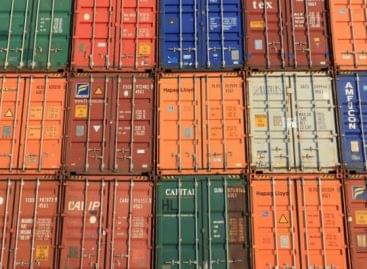Booming cattle trade between Hungary and Turkey
 Data from the Agricultural Economics Research Institute (AKI) and KSH’s market price information system (PÁIR) revealed that in January-July 2018 Hungary’s cattle export was 26,000 tons (no real change from the same period of 2017) – the biggest buyers were Turkey, Austria and Croatia. Turkey was our biggest cattle export market, although sales were down 12 percent.
Data from the Agricultural Economics Research Institute (AKI) and KSH’s market price information system (PÁIR) revealed that in January-July 2018 Hungary’s cattle export was 26,000 tons (no real change from the same period of 2017) – the biggest buyers were Turkey, Austria and Croatia. Turkey was our biggest cattle export market, although sales were down 12 percent.
In the same period our live cattle import dropped 27 percent to 8,000 tons; 59 percent of this came from Germany, the Netherlands and Romania. Beef export was up 16 percent at 9,000 tons in volume and it augmented by 39 percent in value. Beef import jumped 7 percent to 8,000 tons in volume and rose by 15 percent in value. Cattle’s production price was HUF 789/kg in Hungary in September 2018.
According the data from the European Commission, the EU’s egg product import was up 91 percent at 20,000 tons, while export was down 7 percent at 121,000 tons in January-July 2018. Hungary bought 27 percent less egg (11.3 thousand tons) from the international market, and we exported 64 percent more (7.8 thousand tons).
Related news
Univer is building on export-led growth
🎧 Hallgasd a cikket: Lejátszás Szünet Folytatás Leállítás Nyelv: Auto…
Read more >Hungarian exports are gaining new momentum: medium-sized companies are increasingly managing exchange rate risk and opening up to new markets
🎧 Hallgasd a cikket: Lejátszás Szünet Folytatás Leállítás Nyelv: Auto…
Read more >KSH: the foreign trade surplus in goods was 713 million euros in October; the volume of exports was 3.1 percent lower, and that of imports was 1.1 percent higher than in the same period of the previous year
🎧 Hallgasd a cikket: Lejátszás Szünet Folytatás Leállítás Nyelv: Auto…
Read more >Related news
Superbrands celebrated again in 2025
🎧 Hallgasd a cikket: Lejátszás Szünet Folytatás Leállítás Nyelv: Auto…
Read more >László Pekó: “Coop isn’t just a network, it is a way of life – and has been for 30 years”
🎧 Hallgasd a cikket: Lejátszás Szünet Folytatás Leállítás Nyelv: Auto…
Read more >(HU) Karácsonyi tv-reklámok 2025 – indul a közönségdíj szavazás
🎧 Hallgasd a cikket: Lejátszás Szünet Folytatás Leállítás Nyelv: Auto…
Read more >






